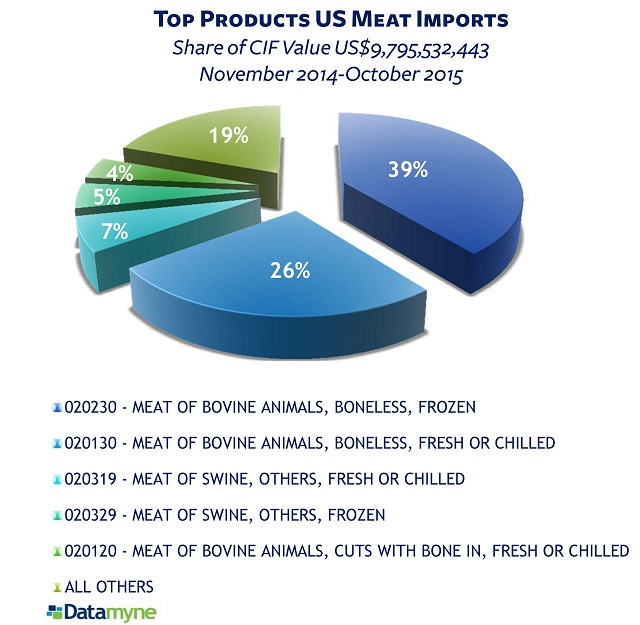Do you know where US beef comes from?
Until last month, you could find out where your hamburger came from by reading the label on the package. Labeling meat products to disclose where the animal was born, raised and slaughtered was mandatory. But Congress has repealed country-of-origin labeling (COOL) for certain meat products. Agriculture Secretary Tom Vilsack suspended USDA enforcement of COOL for muscle cuts of beef and pork, and ground beef and pork as of December 21.
Consumer groups are fuming. Within the industry, repeal of COOL was applauded by the National Cattlemen’s Beef Association and the North American Meat Institute (representing meatpackers and processors). But the National Farmers Union was “deeply frustrated” and “angry.” The Ranchers Cattlemen Action Legal Fund (representing smaller livestock producers) decried “a dilatory Congress and indifferent executive branch” that would “strip citizens of their right to know the origins of their food.”
Where US beef comes from
Most meat consumed in the US is homegrown. The USDA Economic Research Service estimates meat from foreign sources accounts for from 8% to 20% of total supplies. It’s a rough estimate because, the ERS explains, while it is relatively easy to track meat imports and livestock imports, it is difficult to estimate the amount of meat produced in the US from animals that originated abroad. Ironically, the Canadian and Mexican governments argued that the expense of keep track and correctly labeling meat produced in the US from their livestock threatened their exports. The World Trade Organization agreed and the NAFTA partners’ threat of retaliatory tariffs sealed COOL’s fate. (See Congress Blinks, Repeals COOL.)
When the US does import meat, it is likely to be beef. Our trade data shows that beef products account for more than two-thirds of US meat imports by value, with Australia, Canada and Mexico, the top countries of origin.


A closer look at the data reveals that US imports of fresh or chilled beef mostly come from its near-source neighbors in North America. Australia and New Zealand are the clear leaders in frozen beef.


In recent years, the US has been a net exporter of beef. But with drought and high feed prices depressing US domestic beef production, a strong US dollar and soft global demand for US beef, US beef imports outstripped exports in 2014. The USDA expects US production will rise in 2016 for the first time since 2010 as cattle inventories recover on improved pasture conditions and lower feed costs. Meanwhile, Australian production has been, and is expected to continue dropping. A drop in imports from Australia should follow – though it is not yet evident in the trade data.
Related:
- Congress Blinks, Repeals COOL
- Fresh/chilled beef ranked 6th, beef on the hoof 10th, and frozen beef 12th among US agricultural imports in November. Fresh/chilled beef ranked 8th and frozen beef 10th among US agricultural exports. Download the latest monthly ranking of US agricultural imports/exports here.



